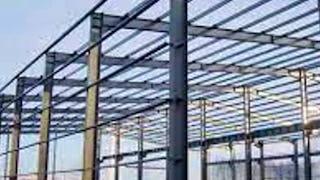This course offers a perspective on reinforced concrete building design, equipping learners with skills to interpret architectural and structural drawings, analyze geometric parameters, and understand material specifications. Learners gain practical proficiency in exposure, cover, fire ratings, load types, and seismic considerations, fostering a nuanced understanding of structural engineering. The curriculum emphasizes real-world application, incorporating analysis tools and design basis report creation. By exploring dead loads, live loads, wind loads, and earthquake loads, learners develop comprehensive knowledge, ensuring their ability to confidently undertake sophisticated designs. The course enhances comprehension of Indian code practices, practical skills, and collaborative project experience for effective structural engineering in diverse environments.


Design Basics of RCC Buildings
This course is part of Concrete Multi Storey Building - System Design Specialization

Instructor: Subject Matter Expert
5,898 already enrolled
Included with
(60 reviews)
Recommended experience
What you'll learn
Understand and interpret detailed architectural and structural drawings.
Learn to assess geometric aspects and specify materials for reinforced concrete design.
Gain knowledge of exposure levels, cover requirements, and fire ratings for reinforced concrete structures.
Skills you'll gain
Details to know

Add to your LinkedIn profile
4 assignments
See how employees at top companies are mastering in-demand skills

Build your subject-matter expertise
- Learn new concepts from industry experts
- Gain a foundational understanding of a subject or tool
- Develop job-relevant skills with hands-on projects
- Earn a shareable career certificate

There are 4 modules in this course
This module provides a comprehensive overview of architectural and structural drawing interpretation, covering geometric parameters, site location considerations, and material specifications. The module not only imparts knowledge about design basis parameters but also cultivates the ability to identify and quantify these parameters for any given building or project, ensuring practical proficiency in reinforced concrete building design. The multifaceted benefits include enhanced comprehension of Indian code practices, practical application skills, and collaborative project experience.
What's included
18 videos1 assignment
This module delves into crucial aspects of structural design, covering exposure and cover requirements, fire rating considerations, member sizing, load combinations, and serviceability requirements specific to building structures. Learners will gain insights into creating comprehensive design basis reports for effective and compliant structural engineering in the built environment.
What's included
13 videos1 assignment
This module provides a comprehensive exploration of structural loads in building design, including dead loads, superimposed dead loads, live loads, and wind loads. The exposure provided enables learners to confidently apply these concepts, ensuring a comprehensive understanding and the ability to undertake a sophisticated design of reinforced concrete buildings.
What's included
18 videos1 assignment
This module comprehensively covers earthquake loads. Learners will learn to predict and evaluate responses to earthquake excitation, compute design acceleration coefficients, determine seismic base shear, and apply seismic design parameters. The Equivalent Static Method for seismic analysis in building structures is explored.
What's included
12 videos1 assignment
Earn a career certificate
Add this credential to your LinkedIn profile, resume, or CV. Share it on social media and in your performance review.
Instructor

Offered by
Explore more from Environmental Science and Sustainability
 Status: Free Trial
Status: Free TrialL&T EduTech
 Status: Free Trial
Status: Free Trial Status: Free Trial
Status: Free TrialL&T EduTech
 Status: Free Trial
Status: Free TrialL&T EduTech
Why people choose Coursera for their career




Learner reviews
60 reviews
- 5 stars
81.66%
- 4 stars
16.66%
- 3 stars
0%
- 2 stars
0%
- 1 star
1.66%
Showing 3 of 60
Reviewed on Sep 18, 2025
Excellent course! Clear explanations on RCC design concepts, practical examples, and very useful for aspiring civil engineers. Highly recommended!
Reviewed on Dec 12, 2024
very good teacher and big love for all of you guys
Reviewed on Jul 24, 2024
Better if foundation design and global stability check for sliding and overturning added to this course. Thanking you Sir

Open new doors with Coursera Plus
Unlimited access to 10,000+ world-class courses, hands-on projects, and job-ready certificate programs - all included in your subscription
Advance your career with an online degree
Earn a degree from world-class universities - 100% online
Join over 3,400 global companies that choose Coursera for Business
Upskill your employees to excel in the digital economy
Frequently asked questions
To access the course materials, assignments and to earn a Certificate, you will need to purchase the Certificate experience when you enroll in a course. You can try a Free Trial instead, or apply for Financial Aid. The course may offer 'Full Course, No Certificate' instead. This option lets you see all course materials, submit required assessments, and get a final grade. This also means that you will not be able to purchase a Certificate experience.
When you enroll in the course, you get access to all of the courses in the Specialization, and you earn a certificate when you complete the work. Your electronic Certificate will be added to your Accomplishments page - from there, you can print your Certificate or add it to your LinkedIn profile.
Yes. In select learning programs, you can apply for financial aid or a scholarship if you can’t afford the enrollment fee. If fin aid or scholarship is available for your learning program selection, you’ll find a link to apply on the description page.
More questions
Financial aid available,

